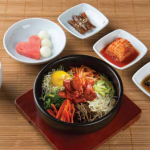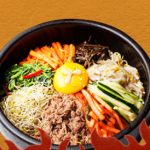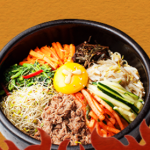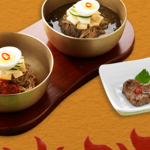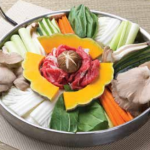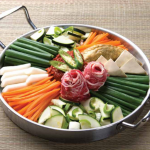
When it comes to spicy food, some like it hot, some like it mild, and some just want to douse their entire meal in a fire extinguisher. Korean cuisine is known for its bold flavors and penchant for heat, but how does it stack up against other international cuisines? Buckle up and prepare your taste buds for a spicy showdown as we dive into the world of Korean spiciness.
Introducing the Spiciness Scale
Before we dive into the delightful world of Korean spiciness, let’s familiarize ourselves with the spiciness scale. Think of it as a rollercoaster ride for your palate, with each cuisine offering different levels of heat that can either leave you reaching for a glass of milk or crying for mercy.
On one end of the scale, we have mild and gentle spices like the comforting warmth of cinnamon or the subtle kick from black pepper. As we move up, we encounter the feisty jalapeños and cayenne peppers, perfect for those who enjoy a moderate level of heat. And finally, at the peak, we have the legendary Carolina Reaper and the infamous Ghost Pepper, capable of melting faces and scorching souls.
Each cuisine around the world has its own signature twist on spiciness, and now it’s time to see how Korean dishes measure up.
Korean Cuisine: Hotter Than Kimchi on a Summer Day
Korean cuisine is no stranger to spice, with vibrant red peppers and chili pastes gracing many of their traditional dishes. Their love affair with spice, commonly known as “maeun sin” or “매운신행” in Korean, makes for a culinary experience that will set your taste buds ablaze.
One of the most popular spicy Korean dishes is none other than the infamous Kimchi. This fermented delight packs a punch with its combination of red pepper flakes, garlic, and gingery goodness. It’s like a party in your mouth, with the heat slowly building up to a crescendo that will have you reaching for a glass of ice-cold soju.
Another spicy delight is Tteokbokki, a beloved street food made with chewy rice cakes slathered in a spicy chili paste called “gochujang.” It’s a fiery explosion of flavors that will leave you sweating and begging for more at the same time.
Korean Cuisine vs. the World: Spice Showdown
So how does Korean cuisine’s spiciness level compare to other international cuisines? Let’s take a tour around the world and find out:
Southeast Asia: Spicy Fiesta
If there’s one region that knows how to bring the heat, it’s Southeast Asia. From Thailand’s “pad kee mao” (drunken noodles) to Malaysia’s “sambal belacan,” the spiciness level in these cuisines rivals that of Korean dishes. It’s a spicy fiesta that will leave you reaching for water, tissues, and perhaps even a fire extinguisher.
Mexico: Spice and Everything Nice
Mexican cuisine is renowned for its use of chili peppers, and they sure know how to spice things up. Whether it’s the tongue-tingling habanero sauce or the smoky chipotle peppers, Mexican dishes can give Korean cuisine a run for its money when it comes to spiciness. Get ready for a flavor fiesta that will make your taste buds dance the salsa.
India: The Land of Spice
When it comes to spices, India steals the show. From the fiery vindaloo to the sweat-inducing phaal curry, Indian cuisine doesn’t shy away from packing a punch. Imagine a world where your taste buds are set ablaze with a single bite, and you’ll find yourself in the realm of Indian spiciness.
Italy: Spice-light Zone
Now, let’s take a detour to Italy, where things are a little more mellow on the spice front. Italian cuisine is known for its flavorful herbs like basil, oregano, and rosemary, but it doesn’t venture into the realm of intense heat. Don’t expect to find any mouth-melting pasta dishes here, but do prepare for a symphony of delightful flavors.
Conclusion: Spice Up Your Life
In the spicy battle of Korean cuisine against the world, it’s safe to say that Korean dishes hold their own when it comes to heat. From the tongue-tingling Kimchi to the explosively delicious Tteokbokki, Korean dishes are not for the faint of heart. However, cuisines from Southeast Asia, Mexico, and India give Korean cuisine a run for its money when it comes to setting tongues ablaze.
So, whether you’re a spice lover or prefer a more mellow culinary adventure, don’t be afraid to explore the multitude of flavors the world has to offer. Spice up your life, one fiery bite at a time!
FAQ
Q1: Are all Korean dishes extremely spicy?
A: Not all Korean dishes are extremely spicy. While Korean cuisine does incorporate a lot of spicy elements, there are also plenty of mild and non-spicy options available.
Q2: Which Korean dish is the spiciest of them all?
A: Among the contenders for the spiciest Korean dish, “Buldak” or “fire chicken” takes the crown. It features extremely spicy chicken marinated in a fiery sauce that will push your heat tolerance to the limits.
Q3: Is it necessary to build a tolerance for spiciness before trying Korean dishes?
A: It’s not necessary, but it can certainly enhance your enjoyment if you gradually expose your taste buds to spicier foods over time. Start with milder dishes and slowly work your way up to the hotter ones.
Q4: Is there a way to make Korean dishes milder if I can’t handle too much spice?
A: Yes, you can make Korean dishes milder by reducing the amount of chili paste or pepper flakes used in the recipe. You can also balance out the heat with other ingredients like sugar, soy sauce, or vinegar.
Q5: Are there any Korean dishes that are spicy but not overwhelmingly so?
A: Absolutely! If you’re looking for a less intense spicy experience, dishes like “Bibimbap” (mixed rice with vegetables and meat), “Jeyuk bokkeum” (spicy stir-fried pork), or “Samgyupsal” (grilled pork belly) offer a moderate level of spice that won’t leave you gasping for air.
Remember, everyone has a different tolerance for spiciness, so don’t be afraid to explore and find your own personal level of heat. Happy spicy adventures!

